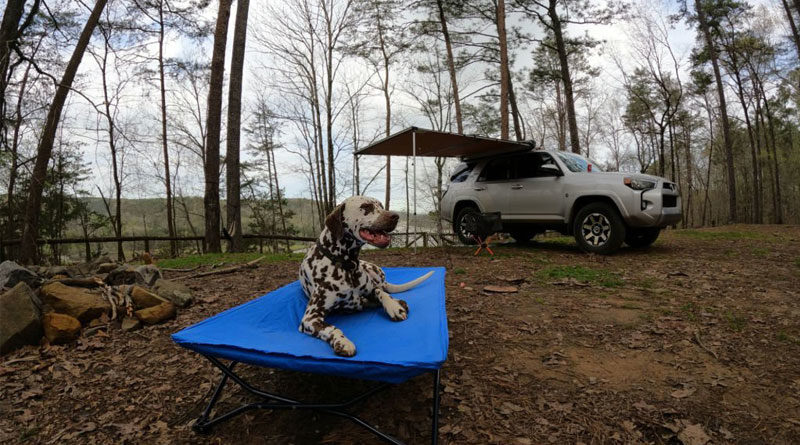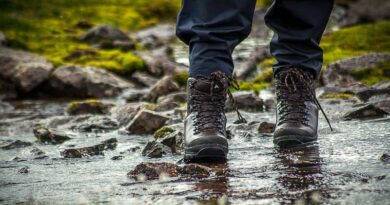8 Sleeping Pad Alternatives You Didn’t Know You Could Try
If you are new to camping or if you are the adventurous type, you may look for ways to replace a sleeping pad. A sleeping pad is one of the most popular pieces of camping gear because it is an essential part of the sleeping system while you are camping.
If you are a new camper, you might not want to commit too much spending on a sleeping pad. If you are an experienced camper, you might look to try something new and see how replacing a pad affects your experience. But for whatever reason, you may look for alternatives to a sleeping pad. Well, there are some good alternatives available. But a word of caution, they may not be as effective.
Sleeping Pad Alternatives
Here are a few clever alternatives to a sleeping pad.
1. Cots
Cots are almost like beds that you can set up in your tent. The biggest advantage of a cot is that it is elevated above the ground which has many advantages. Being elevated from the ground, you don’t need cushioning as opposed to when you are sleeping on the ground directly. Cots are comfortable on their own.
Being off the ground also keeps you safe to some extent from crawling bugs like centipedes and sometimes even snakes. In some cases, cots are better than sleeping pads like in a hot and humid environment when lying above the ground provides more ventilation. Cots also allow you to sit down because of being higher up adding to the comfort factor.
However, cots are heavy and bulky which makes them mostly impractical for backpacking. There are backpacking-specific cots that are either lightweight or inflatable. But cots are a good option for camping and car camping where you can couple the cot with an air mattress to make them even more comfortable. To stay warm on colder nights, you would have to add quilts and blankets.
2. Air Mattresses
An air mattress is just like an air pad. Air mattresses are more comfortable than air pads and that is why they are loved so much. They also give the closest feeling to sleeping on a bed at home. But air mattresses are bulky and heavy and they are not for backpacking. They are mostly used in camping and car camping trips.
Air mattresses also have some problems. First, they are inflatable which means they are also susceptible to punctures just like air pads. Moreover, air mattresses lack any kind of insulation and they get very cold during the night, especially, if it’s drafty. Keeping air mattresses warm can be very difficult. One way to stay warm on an air mattress is to use mattress toppers.
3. Another Sleeping Bag
If you are camping or backpacking for a long time, chances are that you probably have an extra sleeping bag lying around. A sleeping bag is perhaps the closest substitute to a sleeping pad. Sleeping bags are made to provide cushioning and insulation just like sleeping pads. Sleeping bags are also lightweight and packable which makes them ideal for backpacking.
Although, they do weigh fairly more than a sleeping pad. But an extra sleeping bag is still an economical choice allowing you to skip spending on a sleeping pad. It also performs the closest to a sleeping pad.
4. Gym Pad/Yoga Mats
Gym pads can be used in place of sleeping pads because they fold up easily and they are easier to carry. These pads also offer cushioning and, to some extent, insulation as well which makes them usable in warm weather.
Yoga mats on the other hand are thin and don’t provide as much cushioning. The thick rubber surface of the yoga mat doesn’t provide a comfortable sleeping surface. Yoga mats don’t have an R-value because they don’t provide any insulation whatsoever. For the most part, yoga mats are a poor choice for camping. But they can work in warm conditions.
5. Mattress Toppers
Mattress toppers make an excellent temporary alternative to sleeping pads. They come in all shapes, sizes, and materials. Mattress toppers, although pack bulky, are lightweight. Foam mattress toppers have some insulation properties that keep you warm to some extent. It is better than having nothing.
Foam toppers can also be cut down to size to fit in the tent and provide a fair amount of cushioning. But mattress toppers get dirty quickly and are difficult to wash. So choose a topper only if you have an extra one you are willing to dispose of it.
6. Blankets
If you have a bunch of regular blankets in the house, you can bring them with you to form a pad under your sleeping pad. Different fabric types will give you different levels of insulation but if you combine them all they should keep you warm and comfortable.
This is an economical option because almost all people have blankets in their homes and some people have extra blankets to spare. Blankets should keep you well-cushioned and warm. But just like mattress toppers, blankets also get dirty and are hard to wash.
7. Foam Sheets
Foam sheets are another excellent option that is both lightweight and cheap. They are easily available at hardware stores. Just like foam toppers, mentioned above, foam sheets can also be cut down to size and provide insulation to some extent. Foam sheets are also lightweight making them easier to carry for backpacking trips.
8. A Hammock
A hammock is not exactly an alternative to a sleeping pad. It is an alternative to ground camping altogether. A hammock allows you to skip on a sleeping pad. However, you may have to spend some bucks to do so.
What I mean is that hammocks also use sleeping pads in their sleep system. There are sleeping pads specifically designed for hammocks. But if you spend some money on a good underquilt, you won’t need a sleeping pad. Like cots, hammocks also keep you above the ground which means that you can drop a sleeping pad in warm conditions as well. You can also use a large blanket to wrap yourself in it. That way, you won’t need a sleeping pad.
Why Do You Need A Sleeping Pad?
In today’s backpacking world, sleeping pads are an essential part of the sleeping system. Since they are purpose-built for camping, they are lightweight and pack small making them easier to carry. They also make it easy and simple to set up the sleeping system at night. A sleeping pad serves the following functions for sleeping:
1. Provides Cushioning
A sleeping pad provides cushioning from the hard ground. Unless you are used to sleeping on the hard ground, you would want to bring a sleeping pad with you. Even if you can sleep on hard ground, the ground in the wild is often uneven and littered with pointy rocks and branches.
If you are a side sleeper, hip and shoulder bones will start digging into the ground, or rather, the ground will start digging in them. It will get uncomfortable after a while and you won’t be able to sleep. A sleeping pad protects you from these problems by cushioning you from the soft ground so that you don’t have soreness in your body in the morning.
2. Provides Warmth
Another important function of a sleeping pad is to provide warmth or rather, more accurately, insulate body warmth. The Earth is a giant conductor that conducts heat and electricity. Laws of physics dictate that heat and electricity flow from a higher potential to a lower potential. Since the ground is cold and your body is hot, the heat will always flow from your body into the ground leaving you cold.
A sleeping pad provides insulation from the cold ground so that the heat from your body doesn’t escape into the ground. How much insulation a sleeping pad provides depends on its “R-value”. The R-value can be found in the product description of the sleeping pad. The R-value ranges from 0.5 to 8; 0.5 being the least insulated and 8 being the most insulated. Foam pads have lower R-values of between 1 to 2 while air pads have higher R-values of up to 8.
Is A Sleeping Pad Required For Camping?
No! A sleeping pad is not required for camping. But it is popular because it is made to serve a purpose that would otherwise be time-consuming and difficult to manage. The principal functions of a sleeping pad are to provide cushioning and prevent body heat from escaping into the ground. Anything that can fulfill these functions can be used as a replacement for a sleeping pad.
But it is worth noting that sleeping pads were specially developed to serve the function they do because no other gear serves them. If you are looking to use alternatives to a sleeping pad, you would need to combine two or more alternatives. Even then, you may not be able to achieve the same results as with a sleeping pad. While you can use these alternatives in warm or mild weather, you should get a proper sleeping pad when camping in cold conditions.
Conclusion
You don’t need a sleeping pad to sleep in the night during camping. But a sleeping pad makes it much easier and simpler to set up and manage your sleeping system. When you try and switch to alternatives, things become complicated, harder to handle, and time-consuming to set up. Moreover, these alternatives might not be as effective as a sleeping pad. You may have to combine two or more options just to get the same results as you would with a single sleeping pad. Most of the alternatives to sleeping pads can be used in warm or mild conditions. But if you will be facing cold nights, then it is recommended to invest in a proper sleeping pad.




